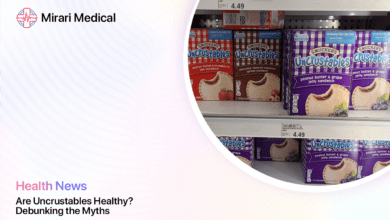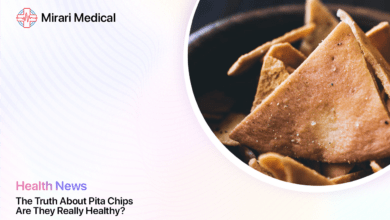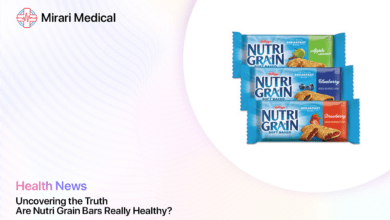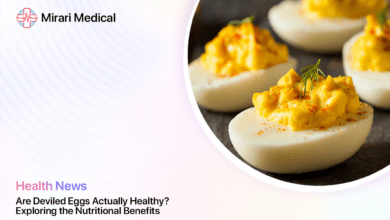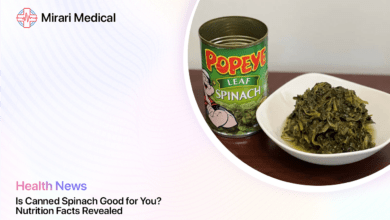The Truth Behind Saltine Crackers: Are They Really Healthy?
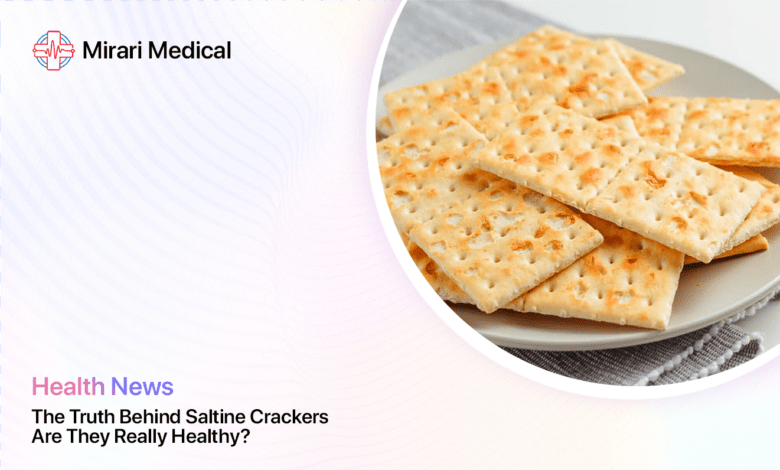
You may be interested
Did you know that the average American consumes about 17 pounds of crackers each year?[1] One of the most popular types is the humble saltine cracker. These thin, square, crispy crackers have been a pantry staple for generations. But as more people focus on eating healthy, many are wondering – are saltines really good for you? Let’s take a closer look at the nutritional facts about this classic snack food.
What Are Saltine Crackers?
Saltine crackers, also known as soda crackers, are a type of thin, crisp cracker made from white flour, yeast, shortening, and baking soda. They get their name from the coarse salt sprinkled on top, which gives them their distinctive flavor.
The first soda crackers were invented in 1876 by F.L. Sommer & Company of St. Joseph, Missouri.[6] The company eventually merged with Nabisco, maker of the iconic Premium brand of saltines. Today, there are many different brands and generic versions of saltine crackers available.
Saltines are known for being:
- Square in shape
- Very dry and crispy in texture
- Lightly sprinkled with coarse salt
- Perforated with small holes (called “docking holes”) to prevent bubbling
People enjoy saltines in many ways – crumbled into soups or chili, topped with cheese or peanut butter, or simply eaten plain as a light snack. They are also a common home remedy for upset stomach and nausea.
How Are Saltine Crackers Made?
Saltine crackers are a type of baked good, but the process of making them is a bit different than other types of crackers or cookies. Here’s a basic overview of how saltines are made in a factory setting:[5]
- Mixing: The ingredients (flour, water, yeast, salt, baking soda) are mixed into a dough.
- Fermentation: The dough is allowed to ferment for up to 30 hours to develop flavor.
- Forming: The fermented dough is run through rollers to create thin sheets, which are then cut into square shapes.
- Docking: The squares are perforated with a special roller that pokes the signature holes. This allows steam to escape during baking so the crackers stay flat.
- Salting: The tops of the crackers are misted with water and sprinkled with coarse salt.
- Baking: The crackers are baked in a very hot oven for just a few minutes until crisp and lightly browned.
- Cooling: The baked crackers travel on conveyors through cooling tunnels before being packaged.
So while the ingredient list for saltines is fairly simple, the process of making them is quite precise in order to achieve that signature crispy texture and flavor. The long fermentation time and quick baking at high heat are key.
What Are the Nutritional Content of Saltine Crackers?
To determine if saltine crackers are healthy, let’s take a look at what’s actually in them. Here is the typical nutritional breakdown for 5 saltine crackers (about 15 grams):[2]
| Nutrient | Amount | % Daily Value |
|---|---|---|
| Calories | 70 | 4% |
| Total Fat | 1.5g | 2% |
| Sodium | 135mg | 6% |
| Total Carbs | 12g | 4% |
| Dietary Fiber | 0g | 0% |
| Protein | 1g | 2% |
Some brands also fortify their saltines with small amounts of vitamins and minerals like:
- Iron (4% DV)
- Folate (5% DV)
- Niacin (5% DV)
- Thiamin (8% DV)
Let’s break this down further to understand the pros and cons of saltines from a nutrition perspective.
1. Calories and Macronutrients
A serving of saltine crackers is fairly low in calories, providing about 70 calories for 5 crackers. This makes them a decent option for snacking, especially compared to things like chips or cookies which can have 2-3 times as many calories per serving.
However, those calories mostly come from refined carbohydrates (white flour), with very little protein, fiber, or healthy fats to balance it out and provide satiety. So while the calorie count is reasonable, saltines are not the most filling or nutritious snack on their own.
2. Vitamins and Minerals
As a processed food made primarily from refined flour, saltine crackers are not a great source of vitamins and minerals. The flour is enriched with some nutrients like B vitamins and iron, but it’s still a far cry from whole grain flour.
Some brands do add extra nutrients to make their crackers appear healthier. But any folate, iron, or other micronutrients in saltines are minimal compared to what you’d get from vegetables, fruits, legumes, and other whole plant foods.
So saltine crackers should not be relied upon as a significant source of nutrition. They are more of an “empty calorie” or occasional snack food rather than a nourishing dietary staple.
3. Sodium Content
One of the biggest nutritional drawbacks of saltine crackers is their high sodium content. A single serving of 5 crackers has about 135mg of sodium, which is 6% of the daily recommended limit.[2]
That may not sound like much, but it can add up quickly – especially if you eat more than one serving at a time. Eating a diet high in sodium is linked with increased risk of high blood pressure and heart disease over time.[4]
The American Heart Association recommends no more than 2,300mg of sodium per day for most adults.[3] So a handful of saltines here and there is fine, but eating them regularly in large quantities could put you over that daily limit.
If sodium is a concern, you can look for unsalted or low sodium versions of saltine crackers. But in general, it’s best to limit processed snack foods like this and focus on whole foods to keep sodium intake in check.
Are Saltine Crackers Healthy?
So based on their nutritional content, are saltine crackers actually healthy? The answer is – not particularly. While they do have some minor benefits, there are also several risks to consider, especially if eaten in excess.
1. Benefits of Saltine Crackers
Despite their nutritional limitations, saltine crackers may offer some potential benefits in certain situations:
- Easy to digest: Saltines are very dry and bland, which makes them easy to eat for people with digestive issues or nausea. They are often recommended on the “BRAT” diet (bananas, rice, applesauce, toast) for upset stomachs.[6]
- Low in calories: If portion size is limited, saltines can be a lower calorie snack option compared to things like chips, cookies, or pastries. A few crackers won’t derail your diet.
- Fortified with some nutrients: While not a major source of nutrition, the small amounts of iron, folate, and B vitamins added to saltines may provide a minor benefit.
- Inexpensive and shelf-stable: Saltine crackers are very affordable and can last for months when stored properly. This makes them a practical pantry staple or emergency food.
So in moderation as part of a balanced diet, saltine crackers are not necessarily harmful and may even provide some value. But they are far from a superfood and shouldn’t be consumed in large quantities.
2. Risks of Consuming Saltine Crackers
On the flip side, there are some definite drawbacks and risks to eating saltine crackers regularly:
- Low in fiber and protein: Saltines are made from refined white flour, so they lack the fiber and protein found in whole grain products. Getting enough fiber is important for digestive health, blood sugar control, and satiety.[4]
- High in sodium: The added salt on top of saltines can add up to a lot of sodium, especially if you eat more than a serving or two. Too much dietary sodium is linked to high blood pressure and heart disease risk.[3]
- May spike blood sugar: The refined carbohydrates in saltines are quickly digested, which can cause spikes and crashes in blood sugar. Over time, a diet high in refined grains may increase risk of insulin resistance and type 2 diabetes.[8]
- Easy to overeat: Crackers in general are very easy to mindlessly snack on, which can lead to overeating. A serving of 5 saltines is quite small, so it’s common to eat 2-3 times that amount in one sitting.
- Contain unhealthy fats: Many brands of saltines are made with hydrogenated oils or shortening, which contain harmful trans fats. Even in small amounts, artificial trans fats are linked to heart disease and other health issues.[4]
- Highly processed: Saltine crackers are an ultra-processed food made from refined flour and additives. A diet high in processed foods is linked to chronic inflammation, weight gain, and increased disease risk over time.[7]
So while enjoying a few saltines here and there is unlikely to harm your health, making them a regular part of your diet could have some negative consequences. It’s best to choose less processed whole grain snacks most of the time.
How Do Saltine Crackers Affect Blood Sugar Levels?
If you have diabetes or are trying to manage your blood sugar, you may be wondering how saltine crackers affect glucose levels. The answer depends on a few key factors:
- Glycemic index: The glycemic index (GI) is a measure of how quickly a food raises blood sugar levels. Saltine crackers have a relatively high GI score of around 74.[8] This means they are rapidly digested and can cause a quick spike in glucose.
- Serving size: The glycemic load (GL) takes into account both the GI and the amount of carbohydrates in a serving. A single serving of 5 saltines has about 11 grams of carbs, which is considered a low GL. But eating multiple servings can quickly add up.
- Toppings and pairings: What you eat saltines with also matters for blood sugar. Pairing them with protein, healthy fats, or fiber (like cheese, nut butter, or veggie slices) can help slow digestion and blunt the glucose response.
- Individual factors: How your body responds to saltines or any other food depends on things like your age, weight, activity level, and insulin sensitivity. Some people may tolerate them better than others.
In general, saltine crackers are not the best choice for blood sugar control due to their refined carbohydrates and low fiber content. They can cause quick spikes and fluctuations in glucose, especially if eaten alone or in large quantities.
If you do choose to eat saltines, stick to a small serving (5 crackers or about 15 grams of carbs) and pair them with blood sugar-friendly foods like protein or healthy fats. Whole grain crackers would be an even better option for more stable glucose levels.
For people with diabetes, it’s best to work with your healthcare team to determine how saltine crackers fit into your individualized meal plan. Regular blood sugar monitoring can help you see how your body responds to different types and amounts of crackers.
Can Saltine Crackers Help with Weight Loss?
Saltine crackers are often thought of as a “diet food” because they are low in calories and fat. But are they actually helpful for weight loss? The reality is a bit more complex.
On the one hand, saltines can be a lower calorie alternative to chips, cookies, or other snack foods. If you’re craving something crunchy, a few saltines (about 70 calories) will do less damage than a bag of potato chips (about 150 calories per serving).
Substituting saltine crackers for higher calorie snacks could theoretically help reduce your overall calorie intake for weight loss. The key is to keep your portion size small and not overeat them.
However, relying on saltine crackers as a regular snack or meal replacement is not a recipe for sustainable weight loss. Here’s why:
- Low in nutrients: Saltines are mostly empty calories from refined carbs, with very little fiber, protein, or healthy fats. This combo won’t keep you feeling full or satisfied for very long.
- Easy to overeat: The lack of fiber and protein in saltines can actually increase hunger and cravings, making it easy to eat a whole sleeve of crackers without feeling full. Overeating any food can stall weight loss.
- High in sodium: The added salt in saltines may cause water retention and bloating, which can mask any fat loss on the scale. Plus, too much sodium over time can lead to high blood pressure and other health issues.
- May increase cravings: The refined carbs in saltines can cause blood sugar spikes and crashes, which may trigger cravings for more carbs and sugary foods. This cycle can make it harder to stick to a calorie-controlled diet.
So while occasionally swapping saltines for higher calorie snacks may help cut calories, relying on them too much can backfire for weight loss. You’re better off choosing more filling, nutritious snacks that provide fiber, protein, and healthy fats.
Good options include:
- Fresh fruits and vegetables
- Nuts and seeds
- Whole grain crackers or toast
- Greek yogurt
- Hard-boiled eggs
- Hummus with veggie sticks
These snacks will keep you fuller longer and provide important nutrients to fuel your body. Combine them with a balanced diet and regular exercise for the most sustainable approach to weight loss and overall health.
Are There Any Alternatives to Saltine Crackers?
If you enjoy the crunch and convenience of crackers but want a more nutritious option, there are plenty of healthy alternatives to saltines. Look for crackers that are made with whole grains, have minimal added sugars and sodium, and provide some fiber and protein. Here are a few good options:
1. Whole Grain Crackers
Crackers made from 100% whole grains like whole wheat, oats, brown rice, or quinoa are a more nutritious choice than refined saltines. Whole grains provide more fiber, vitamins, minerals, and antioxidants.
Some brands to look for:
- Triscuit Original Whole Grain Wheat Crackers
- Wasa Whole Grain Crispbread
- Ryvita Whole Grain Rye Crispbread
- Ak-Mak Whole Wheat Sesame Crackers
When comparing labels, look for crackers with at least 2-3 grams of fiber per serving and whole grains listed as the first ingredient. Watch out for sneaky added sugars and high sodium levels in flavored varieties.
2. Seed Crackers
Crackers made from nutrient-dense seeds like flax, chia, sesame, and pumpkin seeds are another great option. Seeds provide healthy fats, plant-based protein, fiber, and important minerals like magnesium and zinc.
Some brands to try:
- Mary’s Gone Crackers Super Seed Crackers
- Flackers Flax Seed Crackers
- Doctor in the Kitchen Flackers
- Hu Grain-Free Sea Salt Crackers
Seed crackers are often naturally gluten-free and lower in carbs than grain-based crackers. They can be a good choice for people with celiac disease, gluten sensitivity, or those following a low-carb or paleo diet.
3. Nut and Seed Crackers
For an extra protein and healthy fat boost, look for crackers made with a combination of nuts and seeds. These provide a good balance of macronutrients and will keep you feeling full and satisfied.
Some options to check out:
- Simple Mills Almond Flour Crackers
- Jilz Gluten-Free Crackerz
- Flackers Flax Seed Crackers with Nuts
- Natural Nectar Cracklebred Crackers
As with any packaged snack, be sure to read the nutrition labels and ingredient lists carefully. Some nut and seed crackers may still be high in sodium or contain added sugars and oils.
4. Homemade Crackers
For the most control over ingredients, you can try making your own crackers at home. This way, you can choose your favorite whole grain flours, seeds, and seasonings while limiting added salt and sugar.
Some easy recipes to try:
- 4-Ingredient Whole Wheat Crackers
- Homemade Wheat Thin Crackers
- Vegan Flax Crackers
- Paleo Almond Flour Crackers
Making crackers from scratch does require a bit more time and effort than buying them. But it can be a fun kitchen project and a good way to save money on pricey store-bought options.
No matter which type of cracker you choose, remember to pair them with nutrient-dense toppings like nut butter, avocado, hummus, or cheese for a balanced snack. Crackers can absolutely be part of a healthy diet – the key is to choose minimally processed options made with whole food ingredients.
Conclusion: Should You Include Saltine Crackers in Your Diet?
So, are saltine crackers healthy? The answer is – it depends. As an occasional snack in moderation, saltines are unlikely to harm your health. They even have some potential benefits, like being easy to digest and low in calories compared to other snack foods.
However, saltine crackers are not a particularly nutritious choice for everyday eating. They are made from refined white flour, which is low in essential nutrients like fiber, protein, vitamins, and minerals. They also contain a good amount of sodium, which can add up quickly if you eat multiple servings.
Eating too many saltines (or other refined carbohydrate snacks) may have some negative health effects over time, such as:
- Spiking blood sugar levels
- Increasing inflammation
- Contributing to weight gain
- Raising heart disease risk
This doesn’t mean you need to avoid saltine crackers altogether. But it’s best to enjoy them in small amounts and pair them with more nutrient-dense foods like cheese, nut butter, or veggie slices. Choosing whole grain or seed-based crackers most of the time is a more nutritious option.
As with any food, the key is moderation and balance. Saltine crackers can fit into an overall healthy diet, but they shouldn’t be relied upon as a primary source of nutrition. Focus on getting most of your calories and nutrients from whole, minimally processed foods like vegetables, fruits, whole grains, legumes, nuts, and seeds.
If you have specific health concerns like diabetes, high blood pressure, or digestive issues, talk to your doctor or a registered dietitian about how saltine crackers fit into your individual dietary needs and goals. They can help you create a personalized plan that supports your health and well-being.
Takeaways
- Saltine crackers are made from refined white flour, which is low in fiber, protein, and nutrients compared to whole grains.
- A single serving of saltines (5 crackers) contains about 70 calories, 12 grams of carbohydrates, and 135mg of sodium (6% DV).
- Saltine crackers are very low in fiber and protein, so they are not very filling or nutritious on their own.
- The refined carbs in saltines can cause spikes and crashes in blood sugar, especially if eaten in large amounts. This may increase risk of type 2 diabetes over time.
- The high sodium content of saltines may contribute to high blood pressure and bloating in some people. It’s important to watch your portion sizes.
- Saltine crackers may offer some benefits, such as being easy to digest for people with nausea or upset stomach. They are also low in calories compared to some other snack foods.
- For a more nutritious cracker option, look for those made with 100% whole grains, seeds, and nuts. Read labels to find crackers with at least 2-3 grams of fiber per serving.
- Enjoy saltine crackers in moderation as part of a balanced diet rich in whole, minimally processed foods. Pair them with nutrient-dense toppings like nut butter or cheese for a more complete snack.
FAQs
Are unsalted saltine crackers healthier?
Unsalted or low sodium versions of saltine crackers can be a better choice for people watching their salt intake. However, they are still made from refined white flour and lack fiber and protein. Choosing whole grain crackers is a more nutritious option overall.
Do saltine crackers have gluten?
Yes, traditional saltine crackers are made from wheat flour, so they do contain gluten. People with celiac disease or gluten sensitivity should avoid them. Some brands make gluten-free versions with alternative flours like rice or potato starch.
How many calories are in 10 saltine crackers?
A serving of 10 saltine crackers contains about 140 calories, 24 grams of carbohydrates, and 270mg of sodium (12% DV). Keep in mind that it’s easy to eat more than this amount in one sitting, which can quickly add up in calories and salt.
Can saltine crackers help with morning sickness?
Many women find that bland, starchy foods like saltine crackers help relieve nausea and settle their stomach during pregnancy. The exact reason is unclear, but it may be because they are easy to digest and low in odor. Always talk to your doctor about safe and effective remedies for morning sickness.
Are Ritz crackers healthier than saltines?
Ritz crackers are made with enriched flour, vegetable oil, and sugar, so they are slightly higher in calories and fat than saltines. However, both are considered refined grain snacks and are low in fiber and nutrients. For a healthier option, look for whole grain or seed-based crackers with minimal added sugars and oils.
References
- https://www.statista.com/statistics/279571/us-households-amounts-of-crackers-and-bread-sticks-and-hard-pretzels-consumed/
- https://www.nutritionix.com/i/usda/saltine-crackers-0.5-oz/513fceb575b8dbbc210019f4
- https://www.heart.org/en/healthy-living/healthy-eating/eat-smart/sodium/how-much-sodium-should-i-eat-per-day
- https://www.hsph.harvard.edu/nutritionsource/salt-and-sodium/
- https://www.madehow.com/Volume-3/Cracker.html
- https://www.nationwidechildrens.org/family-resources-education/health-wellness-and-safety-resources/helping-hands/using-the-brat-diet
- https://www.health.harvard.edu/blog/what-are-ultra-processed-foods-and-are-they-bad-for-our-health-2020010918605
- https://pubmed.ncbi.nlm.nih.gov/31269427/
Your trusted source for health info, offering expert advice, news, and tips to stay healthy and informed.

